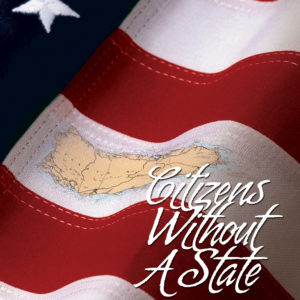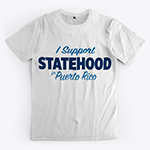Americans in general are not very aware of the history of U.S. territories. Many of those who live in states don’t know whether their state was a territory or the details of its path to statehood.
We notice a lot of mistakes or misleading statements about territories, and we understand that. But sometimes it’s worth noticing, and even pointing out these statements.
For example, the Whidby News-Times, in an encouraging article about how Washington State is supporting Puerto Rico’s fight for statehood, wrote that, “So far, all incorporated territories have become states, save for one of the islands in the Territory of Hawaii.”
Between 1903 and 1959, Hawaii asked for statehood in admission bills almost 50 times. It was the last incorporated territory once Alaska was admitted. In 1959, John MacCormack pointed out to Congress that none of the other territories had failed as states. Hawaii was admitted, including all the land that had been the Territory of Hawaii except Palmyra Atoll. This is the island the Whidby News-Times has in mind.
They’re completely correct that this island is an incorporated territory and yet does not have statehood. But the statement makes it sound as though the situation is the same as it would be if the island of Oahu were left out of the state of Hawaii.
In fact, Palmyra Atoll was excluded from the territory in 1898, for the simple reason that it was owned by a private citizen. It changed hands a few times, but ended up in the hands of a family which went to the Supreme Court to keep their atoll. Part of it still belongs to them, even though it is under the care of the U.S. Fish and Game Commission and most was sold to the Nature Conservancy. It has no permanent population.
That story is too complicated to get an explanation in an article about Washington State’s support of Puerto Rico’s statehood. But Palmyra Atoll was never intended to be part of the state of Hawaii. Its exclusion from the state isn’t an example of a territory that failed to become a state.
In fact, no U.S. territory has ever been refused statehood permanently. Puerto Rico, like the territories that became states before her, will become a state eventually.
Which brings us to the other misleading statement in the article. “It is unclear whether the residents of Puerto Rico desire their territory to become a U.S. state.”
In fact, the voters of Puerto Rico have voted twice to become a state. Opposition leaders have peddled the story that the 2012 and 2017 votes don’t count, but there is no quorum for U.S. votes, and no meaning for blank ballots. Puerto Rico has chosen statehood and has officially requested statehood. It’s time for Congress to act on this request.
Tell your legislators to be on the right side of history.








No responses yet